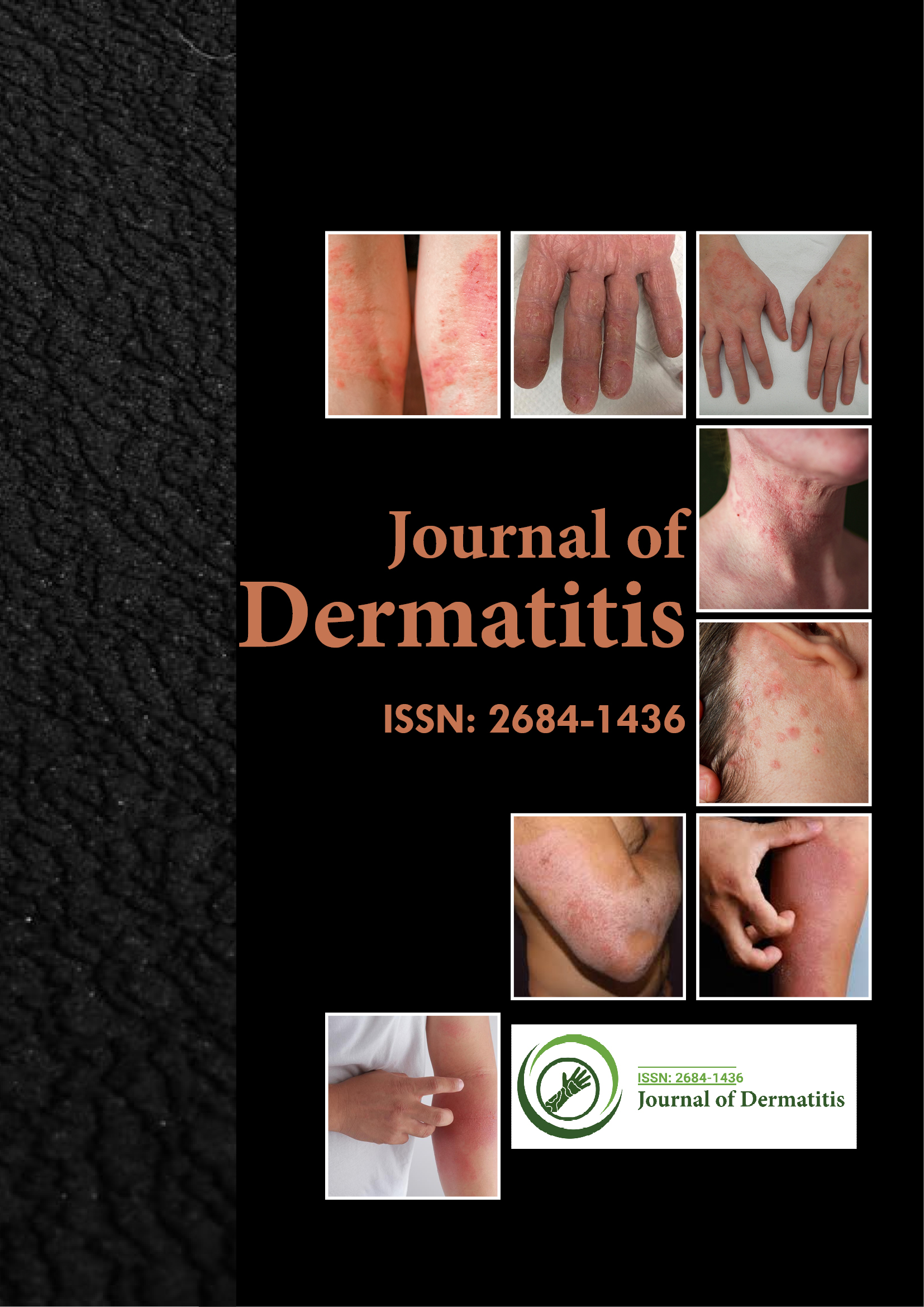Indexed In
- RefSeek
- Hamdard University
- EBSCO A-Z
- Euro Pub
- Google Scholar
Useful Links
Share This Page
Journal Flyer

Open Access Journals
- Agri and Aquaculture
- Biochemistry
- Bioinformatics & Systems Biology
- Business & Management
- Chemistry
- Clinical Sciences
- Engineering
- Food & Nutrition
- General Science
- Genetics & Molecular Biology
- Immunology & Microbiology
- Medical Sciences
- Neuroscience & Psychology
- Nursing & Health Care
- Pharmaceutical Sciences
Short Communication - (2023) Volume 8, Issue 1
Atopic Dermatitis Signs and Management
Tsunemi Akio*Received: 02-Jan-2023, Manuscript No. JOD-23-19855; Editor assigned: 04-Jan-2023, Pre QC No. JOD-23-19855 (PQ); Reviewed: 18-Jan-2023, QC No. JOD-23-19855; Revised: 25-Jan-2023, Manuscript No. JOD-23-19855 (R); Published: 01-Feb-2023, DOI: 10.35248/2684-1436.23.08.172
Description
Atopic dermatitis, often known as eczema, is a disorder that results in dry, itchy, and inflammatory skin. Although it can happen at any age, it is common in young children. One diagnosis of eczema is almost always a dry eczema, which tends to occur more often on the skin of the back. Dry eczema often clears up by the time kids reach preteen or adolescence. Dry eczema may involve dry, flaky skin, but sometimes can cause pitting. Dry eczema is usually characterized by eczema patches and tends to begin around birth. If the patches get a little wet the eczema can spread around the body. Most eczema is on the lower and outer thigh [1]. There are many treatments for dry eczema. Many people use both moisturizers and topical medications. Although dry eczema can be unsightly, there is an alternative: dry eczema can be treated by improving skin's ability to hold water.
Studies show that a diet high in lipids (fats and oils), proteins and water-soluble vitamins can help reduce symptoms. There are several options for gaining these components in diet. For example, fatty meats, nuts and oils are good sources. Another reason that some people experience dry eczema is because of nutritional deficiencies. Atopic eczema can occur when have the condition while on certain medications (such as antibiotics) or certain medications and vitamin deficiency. A nutritional supplement called choline is sometimes used to treat dry eczema. A choline is an amino acid found in fatty meats, nuts, fish and some vegetables. A small study showed that a daily dose of the supplement was effective for people with dry eczema [2]. Anyone who has tried a topical treatment can also try an oral treatment. Oral medications such as hydrocortisone cream and oral steroids may also help manage dry eczema. Because it's important to use a broad range of treatments to improve the skin's ability to absorb water, a "multi-component skin care regimen" is recommended. Most patients with dry eczema use an oral steroid along with a topical treatment. When patient treat dry eczema with an oral steroid and topical therapy, doctor may also prescribe a moisturizer. Sometimes topical products and oral steroids are ineffective, so a third topical treatment to help reduce the inflammation. An ointment called Avobenzone is often prescribed. The ointment reduces dry skin by penetrating the outer layers of skin and reducing the need for topical steroids [3].
Another topical product that can reduce dryness and inflammation is hydrocortisone ointment. These ointments are often applied to the skin before medications or topical treatments. A dermatologist can recommend best options for the treatments to help improve the skin's ability to absorb water [4]. If eczema is not improved after using hydrocortisone ointments and steroids, it's likely due to a condition called eczema inflammation. A dermatologist can tell which medicine or treatment might be right for dry eczema. If eczema is treated well and the dry patches are fading, can probably keep using the topical cream and oral steroid until eczema returns or choose another type of treatment [5].
References
- Cabanillas B, Novak N. Atopic dermatitis and filaggrin. Curr Opin Immunol. 2016;42:1-8.
[Crossref] [Google Scholar] [PubMed]
- De Benedetto A, Rafaels NM, McGirt LY, Ivanov AI, Georas SN, Cheadle C, et al. Tight junction defects in patients with atopic dermatitis. J Allergy Clin Immunol. 2011;127(3):773-786.
[Crossref] [Google Scholar] [PubMed]
- Katoh N, Ohya Y, Ikeda M, Ebihara T, Katayama I, Saeki H, et al. Japanese guidelines for atopic dermatitis 2020. Allergol Int. 2020;69(3):356-369.
[Crossref] [Google Scholar] [PubMed]
- Schempp CM, Windeck T, Hezel S, Simon JC. Topical treatment of atopic dermatitis with St. John's wort cream–a randomized, placebo controlled, double blind half-side comparison. Phytomedicine. 2003;10:31-7.
[Crossref] [Google Scholar] [PubMed]
- Ellison JA, Patel L, Ray DW, David PT, Clayton PE. Hypothalamic-pituitary-adrenal function and glucocorticoid sensitivity in atopic dermatitis. Pediatrics. 2000;105(4):794-799.
[Crossref] [Google Scholar] [PubMed]
Citation: Akio T (2023) Atopic Dermatitis Signs and Management. J Dermatitis.8:172.
Copyright: © 2023 Akio T. This is an open-access article distributed under the terms of the Creative Commons Attribution License, which permits unrestricted use, distribution, and reproduction in any medium, provided the original author and source are credited.

